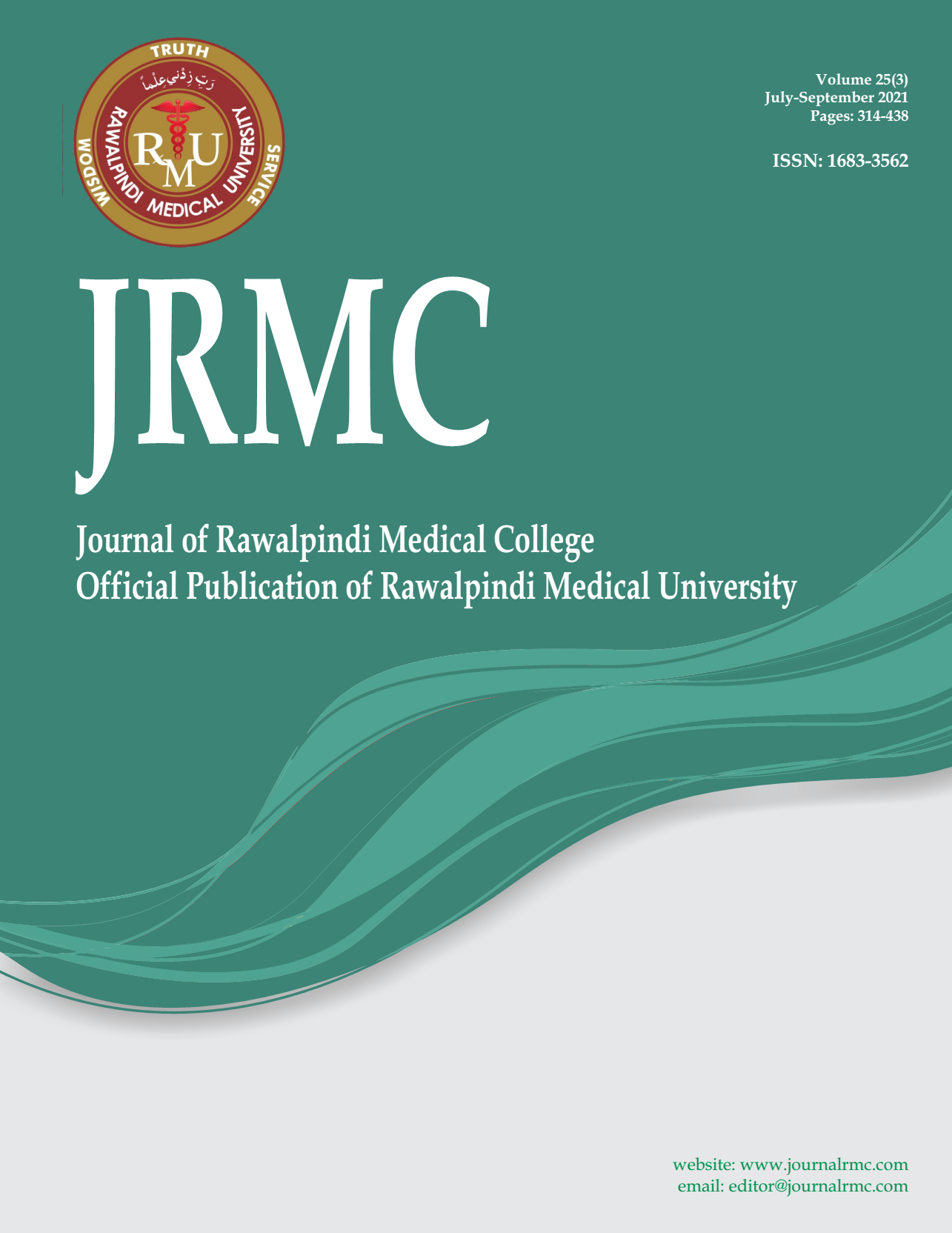Abstract
Background: To find out the association of circulating serum leptin levels with metabolic syndrome.
Methods: This case-control study was conducted on 100 adult subjects (consisting of 50 cases who fulfiled the WHO criteria of metabolic syndrome (Mets) along with equal number of age and sex matched controls). Enzymatic colorimetric method was used to measure fasting plasma glucose and lipid profile. Insulin resistance was calculated by using the Homeostasis Model Assessment-Insulin Resistance (HOMA-IR). Circulating leptin levels were measured using DRG Leptin (Sandwich) ELISA kit. Statistical Package for the Social Sciences (SPSS)-17 was used to analysis of data.
Results: The Mets group comprised of 59% subjects with IFT, 25% with impaired glucose tolerance (IGT), while 16% were diabetic. Mets patients were more obese, as represented by increased BMI, WC and WHR. Dyslipidemia along with elevated levels of fasting plasma glucose and fasting plasma insulin were observed in case group as measured by HOMA-IR. Patients with Mets had elevated leptin levels of 12.98 ± 2.68 (ng/ml) as compared to 5.34 ± 1.84 (ng/ml) in controls (p value < 0.001).
Conclusion: Serum leptin levels were significantly raised in subjects of Metabolic syndrome as compared to controls. Early detection of metabolic syndrome patients by measuring their circulating serum levels will be helpful in reducting the risk of various cardio-metabolic abnormalities (diabetes melitus and cardiovascular diseases) which are associated with this syndrome.

This work is licensed under a Creative Commons Attribution-ShareAlike 4.0 International License.
Copyright (c) 2018 Journal of Rawalpindi Medical College

